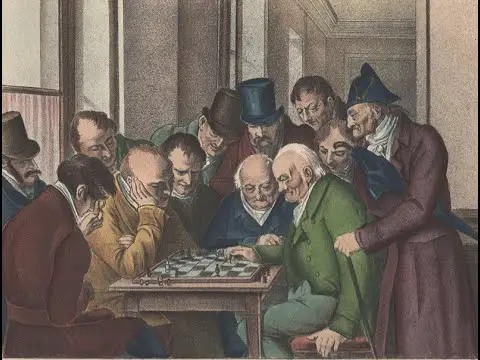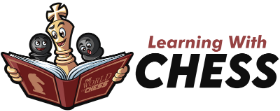Chess in the Age of Enlightenment
09/03/2023 - Actualizado: 01/05/2023
During the Age of Enlightenment, chess was not only a game but a symbol of intellectual pursuit and strategic thinking. The game of chess flourished during this period, reflecting the era’s fascination with reason and rational thought. Chess clubs and tournaments emerged, drawing in players from all walks of life. The game's popularity also led to the creation of new chess strategies, tactics, and theories. This article delves into the history of chess during the Age of Enlightenment, exploring its impact on society and its contributions to the world of intellectual pursuits.
Chess in the Age of Enlightenment: Promoting Intellectual Development
Origins of Chess and Enlightenment Ideals
The game of chess has been played for centuries, with its origins traced back to ancient India. However, during the Age of Enlightenment, chess became more than just a game of strategy and entertainment. Enlightenment ideals of reason, logic, and critical thinking were applied to the game, making it a tool for intellectual development.
Chess as Moral and Social Instruction
Chess was believed to promote moral and social instruction as players learned to make deliberate and calculated moves. The game also taught individuals to accept defeat and strive for improvement, leading to personal growth and development. Chess clubs and societies were established, providing a social outlet for individuals with similar interests and promoting sportsmanship and camaraderie.
Chess and the Education System
During the Age of Enlightenment, the education system embraced the game of chess as a tool for intellectual development. It was believed that playing chess could enhance cognitive abilities such as memory, concentration, and problem-solving skills. Chess was introduced into schools and universities, becoming an integral part of the curriculum.
The Philosophy of Chess
The game of chess has inspired philosophical discussions and debates, with famous philosophers such as Jean-Jacques Rousseau and Benjamin Franklin offering their perspectives on the game. The strategy and tactics employed in the game were seen as reflective of larger philosophical concepts such as decision-making and rationality.
Chess in the Modern World
Today, the game of chess continues to be played and promoted as a tool for intellectual development. Chess competitions and tournaments are held worldwide, and the game is increasingly being used in educational and therapeutic settings to promote cognitive and social development.
Frequently Asked Questions
What is "Chess in the Age of Enlightenment"?
"Chess in the Age of Enlightenment" is a historical period in which chess underwent significant changes and improvements. This era was characterized by the emergence of new tactics, strategies, and rules that are still used today.

During this time, chess evolved into a complex and sophisticated game that requires both skill and intelligence. The chess players of the Age of Enlightenment were some of the most renowned and admired of their time, and their influence can still be felt in the modern game.
Who were some of the most famous chess players of the Age of Enlightenment?
Some of the most famous chess players of the Age of Enlightenment include Francois-André Philidor, who was considered the greatest chess player of his time, and Benjamin Franklin, who was a passionate chess player and advocate for the game. Other notable players of the era include Joseph Henry Blackburne, Wilhelm Steinitz, and Paul Morphy. These players were known for their skill, strategy, and creativity, and their contributions to the game of chess have had lasting effects.
How did the Age of Enlightenment influence the way we play chess today?
The Age of Enlightenment had a profound influence on the way we play chess today. It was during this time that many of the fundamental principles of chess were established, such as the importance of controlling the center of the board, the value of the different pieces, and the significance of pawn structure. Additionally, new strategies and tactics were developed that have become integral parts of modern chess, such as the Sicilian Defense and the French Defense. The Age of Enlightenment also helped to popularize the game of chess and establish it as a respected and esteemed sport.
What lessons can we learn from the chess players of the Age of Enlightenment?
The chess players of the Age of Enlightenment offer many valuable lessons that are still relevant today. One important lesson is the value of perseverance and hard work. Chess requires a great deal of practice, study, and dedication, and the players of the Age of Enlightenment were known for their commitment to improving their game through hard work and discipline. Additionally, the chess players of this era were known for their strategic thinking and creativity, and their approaches to the game offer valuable insights into problem-solving and decision-making. Finally, the chess players of the Age of Enlightenment demonstrate the importance of remaining passionate and engaged in one's pursuits, as their love of the game drove them to pursue excellence and make lasting contributions to the sport.
In conclusion, "Chess in the Age of Enlightenment" provides a fascinating look into the history of chess and its role in shaping the cultural and intellectual landscape of Europe during the eighteenth century. This book sheds light on the interdisciplinary nature of intellectual pursuits during this era and how chess played an integral part in this movement. The author's thorough analysis and engaging writing make this a must-read for history and chess enthusiasts alike.
What is your favorite game of this era?
⭐️ If you want to know more about other articles similar to Chess in the Age of Enlightenment you can visit our category Chess History. We are waiting for you inside 👍


Leave a Reply